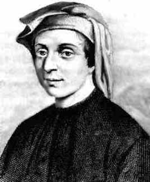Fibonacci and the rabbits - the story

Leonardo of Pisa (c. 1170 – c. 1250), or, most commonly, Fibonacci, was an Italian mathematician, considered by some as the most talented mathematician of the Middle Ages. Fibonacci is best known to the modern world for the spreading of the Arabic numeral system in Europe, as well as for a modern number sequence named after him known as the Fibonacci numbers.
In his book, the Liber Abaci, he posed and solved a problem involving the growth of a hypothetical population of rabbits based on idealized assumptions.
Suppose a newly-born pair of rabbits, one male, one female, are put in a field. Rabbits are able to mate at the age of one month so that at the end of its second month a female can produce another pair of rabbits. Suppose that our rabbits never die and that the female always produces one new pair (one male, one female) every month from the second month on. How many pairs will there be in one year ?
The solution, generation by generation, was a sequence of numbers later known as Fibonacci numbers: the number of existing pairs is the sum of the two previous numbers of pairs in the sequence.
The name of the project
We chose this sequence to illustrate how a massive dissemination project in Europe can be conceived and planned, starting from a limited number of Reference Centres, and giving them the objective of raising the capacity of other centres in Europe to become themselves reference institutions for inquiry-based science and mathematics education in a given time. Reproducing this process from a new born Reference centre, we can expect an iterative growth similar to the Fibonacci sequence.
